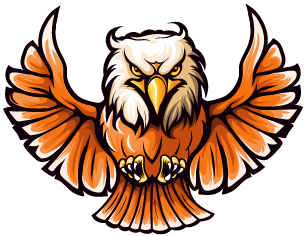The New Zealand Parrot: A 12 Vibrant Jewel of the Southern Skies Zealand parrot
Introduction
At the point when one thinks about the normal miracles of New Zealand, pictures of staggering scenes and one of a kind untamed life ring a bell. Among these fortunes, the New Zealand parrot stands apart as a clear insignia of the country’s avian variety. With its striking appearance and interesting way of behaving, the New Zealand parrot offers an entrancing look into the rich embroidery of the district’s regular legacy.
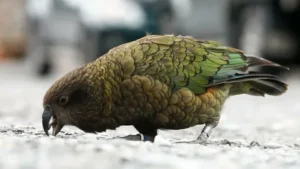
Parrot Species
New zealand is home to a couple of Zealand parrot creature types, each contributing its own assortment and character to the avian mosaic. The most infamous among them is the Kea (Nestor notabilis), a gigantic, olive-green
parrot well known for its understanding and vivacious nature. New Zealand Parrot Neighborhood toward the South Island’s abrupt regions, the Kea is known for its pivotal decisive reasoning skills and interest, habitually enrapturing in complex ways of acting, for instance, mechanical assembly use and amazing social joint efforts.
Another surprising species is the Kākā (Nestor meridionalis), an immediate connection of the Kea. The Kākā is found in the forest of both the North and South Islands and is perceived by its reddish natural hued plumage and specific calls. These.
new zealand parrots are social birds that structure strong family bonds and expect a critical part in their woods surroundings by dissipating seeds.
Changing it up is the Kākāpō , one of the world’s most exceptional and most extraordinary parrots New Zealand Parrot. This evening time, flightless.
parrot is prominent for its uncommon appearance and sensitive attitude. The Kākāpō’s protection status is essentially imperiled, with advancing undertakings highlighted growing its general population and shielding its region.
Adaptations and Behavior
New Zealand parrots have fostered an extent of varieties that help them with prospering in their specific environmental elements. For instance, the Kea’s strong, twisted mouth isn’t only fitting for an eating routine that consolidates natural items, seeds, and bugs yet likewise for its peppy inclination for examining and controlling things.
The Kākāpō’s flightlessness is a variety to its forest area floor climate, where it uses solid areas for its to investigate through thick vegetation. Its evening lifestyle is another variety to avoid trackers and increase rummaging capability during the night.
Conservation Challenges
While New Zealand’s parrots are praised for their greatness and direct multifaceted design, they face a couple of conservation challenges. Domain decimation, predation by introduced species like rodents and stoats, and natural change present tremendous threats to their perseverance.
The Kākāpō, explicitly, has been the point of convergence of concentrated insurance tries, including normal environmental elements recovery, tracker control, and a prisoner repeating program.
New Zealand Parrot These undertakings have shown promising results, with the Kākāpō people gradually growing, but it remains generally risked.
Cultural Significance
Past their natural importance, New Zealand parrots hold a novel spot in Māori culture. The Kea, with its energetic nature, is ordinarily featured in adjacent stories and legends. The Kākāpō, known for its fragile demeanor, is revered in Māori customs and addresses the meaning of assurance and respect for nature
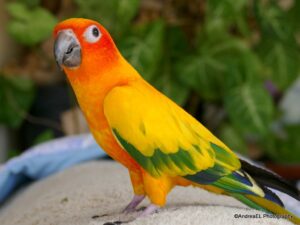
Future Prospects
The destiny of New Zealand’s parrots depends on continued with insurance attempts and public care. By shielding their domains, controlling prominent species, and supporting assessment and raising ventures, there is potential for a seriously encouraging future time for these superb birds.
With everything taken into account, the New Zealand parrot isn’t simply a picture of the country’s ordinary greatness yet furthermore a show of the incredible associations among regular life and their surroundings. As we work to safeguard these avian fortunes, we ensure that individuals in the future can continue to ponder the exuberant assortments and beguiling approaches to acting of these remarkable new zealand parrots.
The Mountain Marvel
The Kea (Nestor notabilis) isn’t only known for its knowledge yet also for its specific, exuberant appearance. Its olive-green plumes are decorated with brilliant orange underwings, which make a shocking visual show in flight New Zealand Parrot. Keas are especially amicable birds, every now and again tracked down in colossal, boisterous social occasions. Their enthusiastic approach to acting integrates sliding down snow-covered inclines, a preparation that seems to fill both brandishing and social necessities.
Kea knowledge is genuine; they have been seen handling complex enigmas and controlling things to get food. This academic interest contacts their correspondences with individuals and various animals, making them both fascinating and once in a while tricky in human-involved districts. They are known to obliterate vehicle windscreen wipers and team up with outside gear, driven by their typical nature to explore and control their ongoing situation
The Forest Dweller
The Kākā (Nestor meridionalis) is another jewel of New Zealand’s avian world, saw for its rich, ruddy natural shaded plumage and its vivacious, worn out tail. Kākā are found in neighborhood forests, where they expect an imperative part as seed dispersers. Their eating routine includes generally of natural items, seeds, and nectar, and they are particularly appended to the nectar from nearby blooms, for instance, the pōhutukawa and the rātā.
These new zealand parrots are social and have a muddled vocal assortment. Their calls and tunes are a basic piece of their correspondence, especially during the replicating season when they use them to attract mates and defend their locales. The Kākā’s ability to change in accordance with different woods types, from bog to montane forests, includes its solidarity and flexibiliti.

The Gentle Giant
The Kākāpō (habrStrigops optilus) stands separated for its novel case as well with respect to its noteworthy properties. It is a tremendous, evening new zealand parrot with plant life green plumes spotted with yellow and brown. Its flightlessness and evening inclinations are varieties to its novel woods climate, where it rummages for food on the ground.
One of the most indisputable components of the Kākāpō is its perplexing sentiment grandstand. Folks settle on shooting decisions to attract females, which are a major piece of their mating customs. These calls can be heard from huge stretches, and their power is a characteristic of the male’s wellbeing. The Kākāpō’s fragile nature and low regenerative rate make it particularly exposed, provoking wide conservation attempts to protect and grow its general population.
Conservation Efforts and Successes
New Zealand has made basic strides in new zealand parrot conservation, with different drives highlighted protecting these remarkable species. Tracker control programs have been fundamental in laying out safer circumstances for new zealand parrot peoples. For instance ,New Zealand Parrot the obliteration of nosy species like rodents and stoats from offshore islands has given a place of refuge to Kākāpō and other risked birds.
Prisoner raising tasks for the Kākāpō, administered by affiliations like the Division of Conservation and the Kākāpō Recovery Program, have been basic in aiding their numbers. These ventures incorporate picky thought, including hand-raising chicks and ensuring that they have a sensible region when conveyed.
The Kea’s vivacious and inquisitive nature has provoked extended public care and preparing attempts. Affiliations work to train people about the meaning of guarding Kea conditions and restricting human-normal life conflicts.
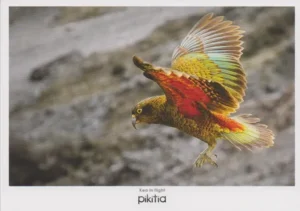
Engaging with the Public
Instructive effort is a vital part of protection endeavors. Programs intended to draw in the general population, for example, directed eco-visits, intuitive displays, and local area science projects, assist with cultivating a more prominent appreciation for New Zealand’s parrots. Schools and nearby networks are urged to partake in preservation exercises, advancing a feeling of stewardship for these surprising birds.
Looking Ahead
The inevitable destiny of New Zealand’s parrots depends upon continued with commitment to insurance and investigation. As natural change and living space setback present new challenges, advancing undertakings to screen and change security strategies will be central. By placing assets into legitimate assessment, living space recovery, and state supported guidance, New Zealand can ensure that its new zealand parrot species continue to prosper from here onward, indefinitely.
All things considered, the New Zealand parrot is a reasonable outline of the country’s extraordinary untamed life. From the carefree Kea and the affable Kākā to the fundamentally endangered Kākāpō, these new zealand parrots encapsulate the unique and dynamic nature of New Zealand’s avian inheritance. Their conservation isn’t simply a showing of the country’s commitment to defending its standard fortunes yet furthermore an indication of the greater commitment we in general proposal in safeguarding the planet’s biodiversity.
Habitats and Ecological Roles
Kea
The Kea possesses the Southern Alps of New Zealand’s South Island, unequivocally in subalpine and snow covered districts. Their current circumstance goes from forested lower inclinations to the snow covered zones over the tree line. Keas are much of the time found in districts with plentiful scree inclinations and high-height fields, which give a rich wellspring of food and entryways for their curious nature.
In these high-level circumstances, Keas expect a basic ecological part. By searching on the ground and in the trees, they help with controlling bug peoples and work with seed dispersal, adding to the prosperity of their surroundings.
Kākā
The Kākā is circulated across New Zealand’s North and South Islands, leaning toward different woodland living spaces, including marsh and montane backwoods. They are especially adjusted to the thick, local backwoods of New Zealand, where their essential food sources — like local organic products, seeds, and nectar — are plentiful.
Kākā add to woods recovery by scattering seeds through their droppings. This cycle keeps up with plant variety and supports the general wellbeing of their woods surroundings.
Kākāpō
By and large, the Kākāpō involved a scope of forested natural surroundings across New Zealand, including swamp and subalpine woods. Today, because of natural surroundings misfortune and predation pressures, the excess Kākāpō are found exclusively on hunter free seaward islands like Little Obstruction Island and Codfish Island (Whenua Hou). These islands have been explicitly decided for their controlled surroundings and bountiful assets.
The Kākāpō’s ground-abiding way of life implies it depends vigorously on woods floor vegetation for scrounging. Its part in the environment is less irrefutable contrasted with different parrots however is accepted to include seed dispersal and cooperations with woodland plants.
Diet and Foraging Behavior
Kea
The Kea’s eating routine is unique and integrates normal items, seeds, nectar, and bugs. They are moreover known to eat remains, which is an interesting approach to acting among parrots. Their strong noses are adapted to breaking into outrageous food sources developed starting from the earliest stage, their scavenging conduct is a crucial compute their knowledge. Keas are popular for their affinity to explore and annihilate objects, which they often do searching for food.
Kākā
Kākā have an eating routine fundamentally made out of nectar from local blossoms, organic products, seeds, and bugs. Their long, bended mouths are appropriate for removing nectar from blossoms and for stripping bark to arrive at the bugs concealed under. Kākā are known to be proficient at utilizing their snouts to get to different food sources, including controlling branches and blossoms.
Kākāpō
The Kākāpō’s eating routine incorporates natural products, seeds, and blossoms, with an inclination for specific local species like rimu and kahikatea. Its nighttime searching includes utilizing its sharp feeling of smell and fantastic hearing to find food. Kākāpō are likewise known for their low metabolic rate, which permits them to get by on a generally low-energy diet.
Interactions with Other Species
Kea
Kea are exceptionally friendly and associate with different species, including different birds and vertebrates. They have been noticed drawing in with presented species, once in a while with unfortunate results for the two players. Their connections with people can be both useful and dangerous, as their interest can lead them to harm property, however it likewise cultivates a more profound comprehension of their way of behaving.
Kākā
The Kākā’s associations with different species are for the most part sure and include common advantages. They assist with pollinating local blossoms and scatter seeds, which upholds a different scope of plant and creature life. Their presence in timberlands keeps up with natural equilibrium, and they exist together moderately calmly with other woods staying species.
Kākāpō
The Kākāpō’s connections are for the most part restricted to other woods species, including the two plants and creatures. Its essential cooperations are with plant species for scrounging and with other Kākāpō during the rearing season. The Kākāpō’s restricted reach and low populace thickness mean it has less immediate communications with other untamed life contrasted with additional broad species.
Conservation Landscape
New Zealand’s obligation to parrot preservation is a diverse exertion including natural surroundings insurance, hunter control, and examination. Associations like the Division of Protection (DOC), the Kākāpō Recuperation Program, and different local gatherings assume essential parts in these endeavors.
Habitat Protection
Safeguarding and reestablishing environments is fundamental for the endurance of New Zealand’s parrots. This includes reforestation projects, controlling obtrusive plant species, and guaranteeing that key environments stay in salvageable shape. The making of hunter free zones on seaward islands has been especially effective in giving places of refuge to jeopardized species like the Kākāpō.
Predator Control
Endeavors to control presented hunters like rodents, stoats, and possums are basic to the endurance of New Zealand’s local birds. These projects frequently include catching, harming, and living space adjustment to diminish hunter populaces and limit their effect on bird species.
Research and Monitoring
Progressing research is fundamental for grasping the way of behaving, biology, and protection needs of New Zealand’s parrots. Checking programs track populaces, concentrate on regenerative achievement, and survey the adequacy of protection measures. This examination illuminates and refine preservation techniques to more readily safeguard these extraordinary birds.
Public Engagement
Raising public mindfulness and encouraging local area inclusion are essential for effective preservation. Instructive projects, volunteer open doors, and backing drives assist with drawing in the general population and assemble support for protection endeavors.
Habitat Loss
Deforestation and territory debasement present continuous dangers to parrot species. Logging, land transformation for farming, and metropolitan development diminish the accessibility of reasonable territories. Preservation endeavors center around living space reclamation, reforestation projects, and laying out safeguarded regions to guarantee that parrots approach their common habitats.
Climate Change
Environmental change influences, for example, adjusted precipitation designs, temperature variances, and outrageous climate occasions, can influence parrot living spaces and food sources. Changes in plant blossoming and fruiting cycles can impact the accessibility of nourishment for parrots. Investigation into environment influences and versatile administration procedures is fundamental for relieving these impacts and supporting parrot protection.
Human-Wildlife Conflict
Collaborations among parrots and people can prompt contentions, particularly in regions where parrots come into contact with human foundation or property. For instance, Keas are known for their inquisitive nature and can harm vehicles or outside gear. Tending to human-natural life struggle includes bringing issues to light, executing measures to limit harm, and advancing concurrence methodologies.
Emerging Technologies and Research
Tracking and Monitoring
Progressions in following innovation, like GPS and radio transmitters, have changed the investigation of parrot conduct and developments. Analysts utilize these innovations to screen individual birds, track movement examples, and assemble information on territory use. This data is significant for figuring out the biological necessities of parrots and illuminating protection methodologies
Conclusion
The parrots of New Zealand are a demonstration of the country’s rich regular legacy and one of a kind biodiversity. From the savvy Kea and the social Kākā to the uncommon Kākāpō, these birds assume crucial parts in their biological systems and hot.
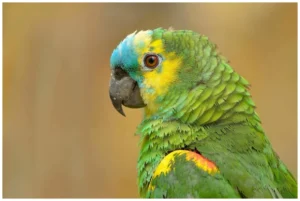
Table of contents
- Introduction
-
- Adaptations and Behavior
- Conservation Challenges
- Cultural Significance
- Future Prospects
- The Mountain Marvel
- The Forest Dweller
- The Gentle Giant
- Conservation Efforts and Successes
- Engaging with the Public
- Looking Ahead
- Habitats and Ecological Roles A Palette of Parrot Species
- Diet and Foraging Behavior
- Conservation Landscape
- Habitat Protection
- Predator Control
- Research and Monitoring
- Public Engagement
- Habitat Loss
- Climate Change
- Human-Wildlife Conflict
- Emerging Technologies and Research
- Tracking and Monitoring
- Conclusion
-
